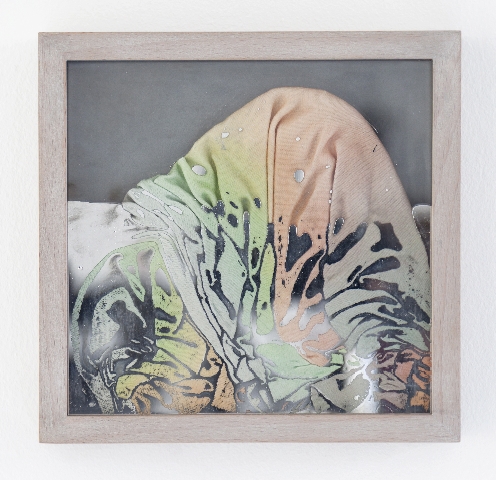A line scratched into Supplement’s floor, approximately five feet past the entrance to the former workshop space, marks where Adam Thomas and Thom O’Nions first erected a wall to create a small gallery in their Bethnal Green studio. That was 2008, and since then the wall has moved steadily deeper into the building; today the gallery takes up by far the greater amount of floorspace, and the ‘studio’ is no more than an office. Thomas is an artist and O’Nions a graduate of the curating course at London’s Goldsmiths, yet the evolving architectural demarcation of Supplement is a testament to their increasing commitment to running the nonprofit space at the expense of individual pursuits.
This effort has resulted in 20 exhibitions; almost all have been solo presentations of younger, postgraduate artists, with practices that tend towards a formally tight, even materially slick output. Visiting the space a few weeks into 2012, I intended to ask Thomas and O’Nions about the necessity of this model in London. There are obvious reasons why artists need to act autonomously outside commercial formats, but the rationale isn’t always so clear for a gallery that operates from a postcode boasting a dense thicket of galleries and which – outwardly at least – mimics the straight exhibition cycle of its commercial counterparts.
At the time of my visit, the new season of exhibitions has yet to start, and I arrive to find four chairs set out in a circle. But they aren’t configured in this discussion-group style solely for my benefit – the artist Steve Bishop is also present, and he’s installing a solo show for the space (he was the subject of the second exhibition Supplement staged, in May 2008; the gallery doesn’t shy away from circling back to artists). Except that, on this, the first day of installation, there’s not much actual practical work being done, just a lot of discussion around it. Bishop describes how he’s going to remove the partitions of the office wall, leaving the bare supporting structure, and how, at night, there will be a projection diffusing from the window into the street. He says that he’s interested in using the art to fill and push the gallery beyond its normal physical form.
The process of talking through a show – verbalising possible work and the thoughts that surround it – is central to Supplement, O’Nions explains. Perhaps this is what sets them apart. The gallery seeks to collaborate with each artist, and it is rare that an artist is left to configure an exhibition on his or her own, or to show solely preexisting work. This is why O’Nions and Thomas set up the gallery space in the first place, they say. Within the original studio space, very little art got made; more often than not the duo ended up discussing theory or the practice of other artists who interested them. The gallery space was an attempt to make this dialogue a productive, public one, a justification for those myriad hours spent in conversation. The idea of an exhibition as a place of dialogue – and the artist-run space as the primary model for facilitating that communication – comes up repeatedly.
Due to the financial restraints intrinsic to the artist-run venue, and the singularity of purpose such an enterprise has (to periodically put on shows at one space – no need to additionally act as the artist’s commercial representative or tend to the fundraising and public-programming demands of an institutional setting), there is time for such discursive pursuits. Exhibitions gestate for a long time at the gallery, and as the majority of the artists the curators work with are known to them through a peer network, discussions can occur sporadically and informally. To grab at a not wholly satisfactory analogy, Supplement seems to apply the principles of the slow food movement to the business of art production.
However, when I broach the question of why such a space is needed – beyond the privilege of time it grants to the artist – O’Nions and Thomas themselves express concern about the status of their work within the wider ecosystem, pointing specifically to the institutional habit of coopting artist-run efforts for their own means. While this happens frequently on an individual level, with off-spaces perhaps erroneously viewed as some sort of entry-level position for the career artist, there was a time a few years back when they were also providing actual programming for institutions (X Initiative and Tate Modern’s No Soul for Sale ‘festival of independents’ in New York and London in 2009 and 10, for example). While those events fed on the clichéd glamour of the low-fi off-space, Supplement eschews that aesthetic to operate on a level which is materially akin to their commercial and institutional neighbours, albeit at the considered pace of artistic production.
